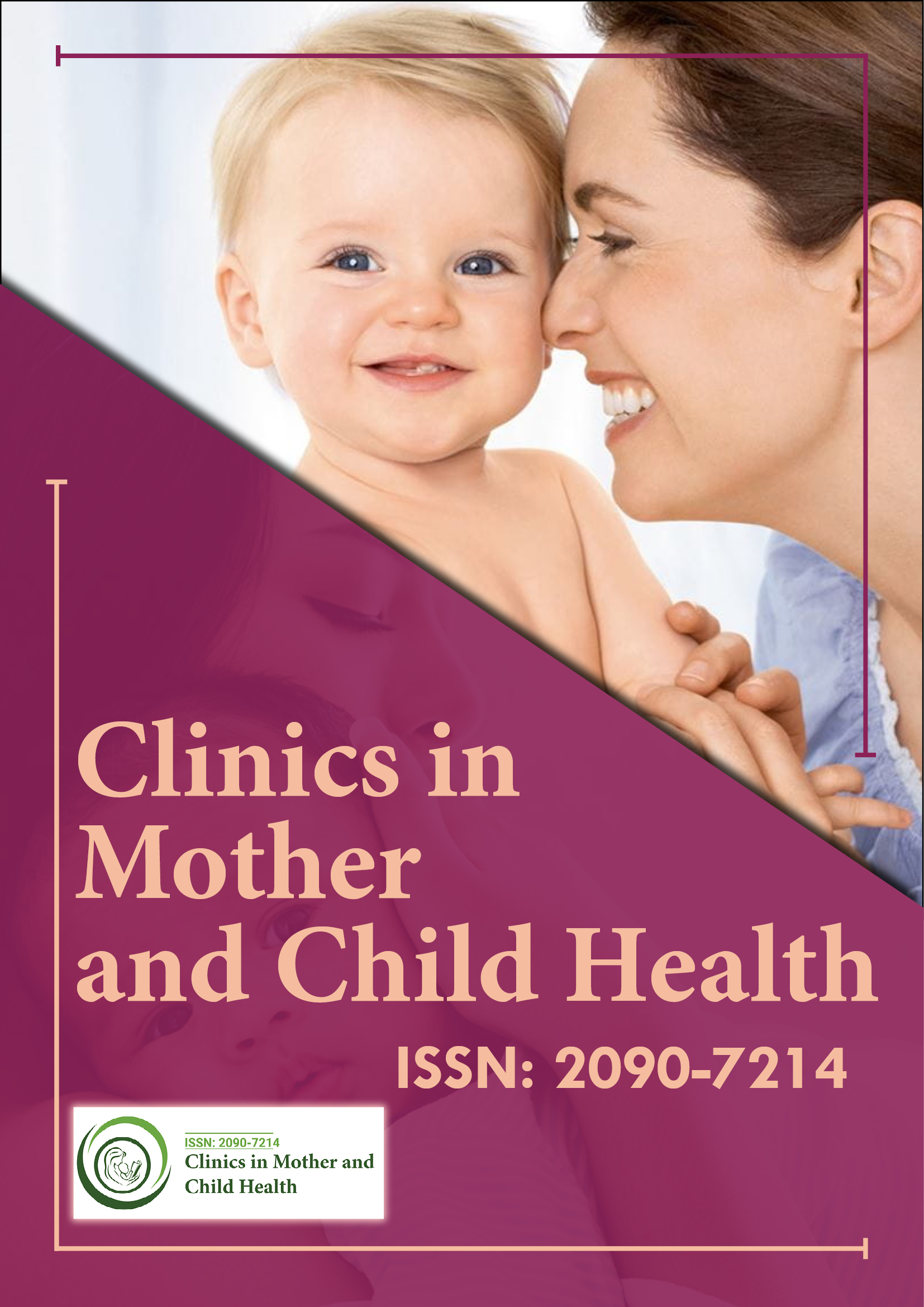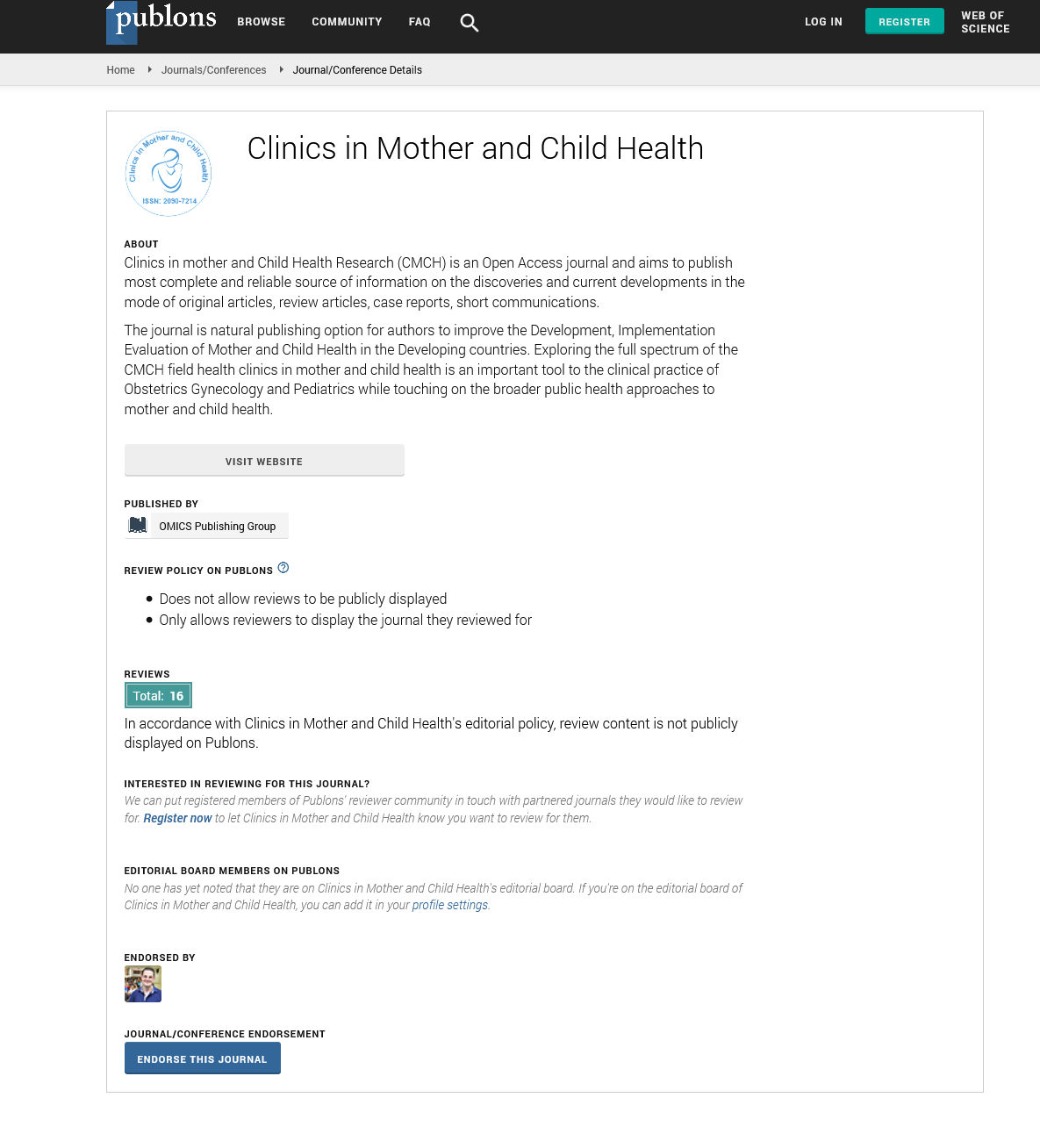Indexed In
- Genamics JournalSeek
- RefSeek
- Hamdard University
- EBSCO A-Z
- Publons
- Geneva Foundation for Medical Education and Research
- Euro Pub
- Google Scholar
Useful Links
Share This Page
Journal Flyer

Open Access Journals
- Agri and Aquaculture
- Biochemistry
- Bioinformatics & Systems Biology
- Business & Management
- Chemistry
- Clinical Sciences
- Engineering
- Food & Nutrition
- General Science
- Genetics & Molecular Biology
- Immunology & Microbiology
- Medical Sciences
- Neuroscience & Psychology
- Nursing & Health Care
- Pharmaceutical Sciences
Perspective - (2025) Volume 22, Issue 5
Improving Neonatal Care through Early Skin-to-Skin Contact
Hiroshi Tanaka*Received: 01-May-2025, Manuscript No. CMCH-25-29587; Editor assigned: 03-May-2025, Pre QC No. CMCH-25-29587; Reviewed: 17-May-2025, QC No. CMCH-25-29587; Revised: 26-May-2025 Published: 31-May-2025, DOI: 10.35248/2090-7214.25.22.527
Description
The first hours after birth represent a period of profound physiological and emotional change for both mother and infant. One practice increasingly recognized for its benefits is skin-to-skin contact immediately after delivery. The physical closeness helps stabilize the newborn’s body temperature regulate heart rate and support respiratory adaptation outside the womb. In addition to these physiological benefits this contact strengthens maternal-infant bonding which is essential for emotional development and breastfeeding success. Numerous studies from different cultural settings have highlighted the effectiveness of skin-to-skin care in improving neonatal outcomes. Infants held close to their mother’s chest show reduced crying episodes improved glucose stability and greater initiation of breastfeeding compared to those separated at birth. This practice also benefits mothers by promoting oxytocin release which enhances uterine contraction reducing postpartum bleeding and supporting emotional well-being.
Despite strong evidence adoption rates of immediate skin-to-skin contact vary widely across hospitals and regions. Barriers often include lack of trained healthcare personnel in busy delivery wards or insufficient knowledge among caregivers about the physiological significance of the practice. Education campaigns aimed at healthcare workers have shown significant improvements in implementation rates particularly in facilities where standard operating protocols emphasize uninterrupted mother-infant contact during the first hour of life. The practice also supports successful exclusive breastfeeding which remains a global priority for neonatal health. Mothers who experience uninterrupted contact are more likely to breastfeed within the first hour and sustain it over several months. Breastfeeding in turn reduces risks of gastrointestinal infections enhances immune protection and contributes to cognitive development. In low-income countries where access to clean water and safe formula feeding is limited this early support can be lifesaving.
Another dimension of skin-to-skin care lies in its use in neonatal intensive care units for preterm or low birth weight infants. Known as kangaroo mother care this approach involves prolonged skin-to-skin holding often combined with exclusive breastfeeding. Evidence consistently demonstrates reductions in infection rates hospital stays and mortality among premature babies receiving kangaroo care. Moreover parents report reduced anxiety and stronger attachment with their infants compared to conventional incubator-based care alone. Cultural acceptance of skin-to-skin contact differs across societies. In some contexts modesty norms or traditional birth practices may limit immediate physical closeness. However community education and involvement of family members in awareness programs help normalize the practice by emphasizing its health benefits rather than framing it solely as a modern intervention.
Integration of this practice into health policy has been advancing. Countries with national guidelines that mandate early skin-to-skin contact report significantly higher rates of implementation. In addition training programs for midwives nurses and physicians are critical in ensuring that even high-risk deliveries incorporate safe skin-to-skin initiation whenever feasible. Technology is also contributing with mobile-based education platforms delivering reminders to healthcare workers and mothers about the importance of uninterrupted contact after birth. Ultimately skin-to-skin care is a simple low-cost intervention with profound effects on neonatal survival and long-term development. Expanding its implementation requires not only healthcare system readiness but also community acceptance. As awareness grows this practice can serve as an accessible means of improving neonatal outcomes and strengthening early maternal-infant bonds worldwide.
Citation: Tanaka H (2025). Improving Neonatal Care through Early Skin-to-Skin Contact. Clinics Mother Child Health. 22:527.
Copyright: © 2025 Tanaka H. This is an open-access article distributed under the terms of the Creative Commons Attribution License, which permits unrestricted use, distribution, and reproduction in any medium, provided the original author and source are credited.

